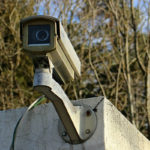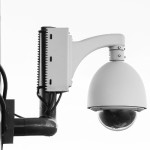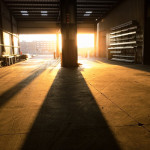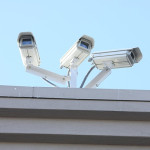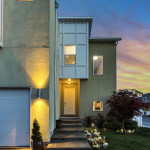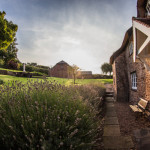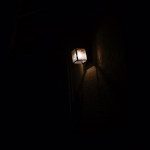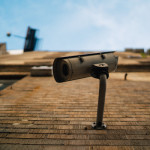Security Camera: What NOT To Do
When it comes to security cameras, there are many mistakes that can compromise the effectiveness of your surveillance system. Don’t make these mistakes when installing your security cameras.
- Don’t use indoor security cameras outdoors.
Sounds like common sense, right? Indoor security cameras are tailored to indoor conditions, so using them outside would produce poor quality videos and images. And the same goes for outdoor cameras being used indoors – just don’t do it.
- Don’t mount security cameras in or near direct sunlight.
Direct sunlight can damage your camera overtime, decreasing its overall lifespan. In addition, it can wash out images, deeming your footage useless. Consider investing in outdoor housing that can protect your cameras and adjusting the angle of your camera so that the sunlight does not interfere with your images.
- Don’t place your camera in an area where it will be completely exposed to the weather.
You want to be wary of weather conditions when installing outdoor cameras. Be sure to check the IP ratings of the cameras and any additional housing you may invest in. And, if possible, install your outdoor cameras under the eaves for added protection.
- Don’t install surveillance cameras in areas that are not well lit at night.
That is, unless you have a night vision camera. Cameras without night vision or a comparable feature will not produce any usable images in the dark.
- Don’t install cameras without informing employees, neighbors, the public, or loved ones.
When recording, you must inform others that they are under surveillance. The easiest way is to install a well-designed sign in a high traffic area so that it is seen by everyone. Be sure to check with local laws and ensure you are in compliance with all laws before implementing your surveillance system.
- Don’t use substandard or weak mounting equipment.
If your mounting equipment is not as sturdy, you decrease performance and safety and leave your equipment vulnerable to tampering or theft. Also, it should go without saying, but please do NOT attach your cameras to the gutter.
- Don’t place cameras where there may be obstructions.
Again, this may sound like common sense but it must be said. While it may seem like there are no obstructions when you first install your cameras, sometimes natural elements can change that. For example, on a particularly windy day, a branch from a nearby tree may block your camera’s view. Be sure to consider all potential obstructions before settling on a location.
- Don’t leave wires exposed.
By doing so, you may invite others to hack, damage, or disable your camera system. In addition, exposed wires can pose a safety hazards for young children and adults.
- Don’t place your camera where it will be easily accessible or within reach.
Again, this makes it easier for intruders to hack, disable, or even steal your cameras. It helps to install your cameras high and out of reach, not only to prevent theft or vandalism, but to also get a better view of the area.
- Don’t merely place your camera viewing your front door.
Of course the front door is an important place to monitor, but really, you should be watching all potential points of entry (ex. sliding doors, basement doors, windows).
If you have any other security camera tips to share, connect with us on Facebook, Twitter, LinkedIn, and Pinterest.
Need help finding the right security system for you? Choose SecurityCamExpert.com! We can guide you through the process of choosing the security cameras that will best suit your needs. If you are in Southern California, we can even install the system for you. Visit us online or call 888-203-6294 to learn more.
PTZ Cameras: What To Look For
PTZ security cameras offer Pan, Tilt, and Zoom capabilities for more advanced and comprehensive surveillance. Because of their unique flexibility and broad coverage, PTZ cameras are often chosen to remotely monitor large areas such as parking lots or stadiums. If you are considering installing PTZ surveillance cameras for your property, here are some of the best PTZ camera features and benefits.
Large Field Of View
Depending on where you install your PTZ camera, it could have a 360 degree field of view. In addition, most cameras can be pre-programmed to provide specific viewing angles at pre-determined times. Pan and Tilt can also be pre-programmed. Thanks to this, PTZ cameras can do the job of a multi-camera installation, making them a cost-effective and smart alternative for large area surveillance and protection.
Motion Tracking
Most PTZ cameras come with built-in tracking which can be set to detect motion and track a person or object, automatically panning, tilting or zooming to follow the person or object as it moves. This feature can prove invaluable should a theft or vandalism occur on your property. When choosing a PTZ camera, full motion tracking capabilities is a must.
Night Vision
This is an important feature in nearly all security cameras, but especially in areas with poor lighting conditions. The modern, more advanced PTZ cameras can capture images in total darkness thanks to LEDs and special IR filters. The small LEDs emit infrared light, which is not visible to the human eye, but with the special IR filter, the camera sees a well lit area.
Remember that a PTZ camera that is rated for a detection range of 600 feet or more will usually be rated for a max range of 400 feet for night vision. Also, it is recommended that you set up your PTZ cameras in the same lighting conditions they will be recording in, whether dark or light.
Weatherproof
If you will be installing PTZ cameras outdoors, they must be weatherproof. Most PTZ cameras are designed to withstand harsh elements, but it is wise to double check the specifications to ensure their durability. Weatherproof PTZ cameras can be installed in very remote locations such as rooftops or the sides of tall buildings.
Powerful Zoom
PTZ security cameras have a detection ability that ranges from 150 feet (on the low end) up to 1,000 feet (on the higher end). The ability to zoom in on a person or object ranges from 12X to 36X for higher level PTZ Speed Domes. This makes them ideal for large parking lots or building tops as it allows the camera to be discreetly out of sight while still providing the option to zoom in for a better picture of what is happening.
Tamper Resistant
The best place for a PTZ camera is mounted high above the ground, which enables the best view possible, a wide 360 degree range, and added protection. As mentioned, most PTZ cameras are built tough, with rigid metal housings and high-strength polycarbonate domes that are virtually shatterproof to vandals.
Alarm Inputs
Most PTZ cameras have four alarm inputs, which connect to other important devices (ex. motion detectors, door contacts, glass break sensors). The camera can be programmed so that when activity occurs in a given area, other programmed activity is halted in order to zero in and record what is going on.
Auto Focus
The good PTZ cameras will have full range auto focus built in. This ensures clarity no matter where you pan, tilt or zoom. In addition, most have an auto adjust IR LED that quickly focuses the picture when moving the camera in areas of complete darkness. This feature is almost always missing from cheaper cameras.
Simplified Installation
Because they can cover a wider area, it may be more cost-effective to install a couple PTZ cameras to monitor your property (ex. parking lots, garages) rather than implementing several fixed security cameras. You can save on both the initial cost and installation of your system.
High Definition Options
Higher end PTZ Speed Domes are also available in IP versions, which will deliver resolutions from 720i to 1080P, and with HD-SDI technology, which provides high definition video in full 1080P resolution. The HD-SDI PTZ cameras are easier to install and maintain than IP cameras since they are installed and set up exactly the same way as standard analog cameras.
These types are only recommended when you need the highest resolution images possible. They require 2-4 times as much hard drive space as regular analog security cameras and are rather expensive for large installations.
For a great selection of PTZ security cameras and other surveillance system equipment, please visit SecurityCamExpert.com or call 888-203-6294. You can also connect with us on Facebook, Google+, Twitter, LinkedIn, and Pinterest.
What Can Your Security Camera Do?
Surveillance camera systems help to provide home and business owners security, protection, and peace of mind. But did you know you can use your security cameras for additional purposes? Here are some lesser known uses and benefits of security camera systems.
- Time Lapse Videos
Some cameras come equipped with a time lapse feature which can allow you to create videos to display changes over time. These are great for construction or demolition sites, for capturing weather, nature, or wildlife.
- Animal Life
Do you manage a barn, farm, or ranch on your property or remotely? Security cameras can save you time and travel costs by allowing you to check in on your animals remotely. And if you have pregnant livestock, you can keep an eye on the progress and possibly record the birth.
- Pranks
If your family is a fan of pranks, security cameras can come in handy. Features like two-way audio and alarms can startle your unsuspecting guests, and you can capture the reactions as a souvenir.
- Check Weather
Did you know security cameras help when checking the forecast? When you see images and footage from remote areas, such as when you are checking a weather application, those are taken from strategically placed security cameras.
- Capture Precious Family Moments
Whether it’s your baby’s first steps or first words, you may be able to capture it on video. If you were away when it happened, you can review it later, and you can also share the special moment with other family members and friends.
- Insurance Discount
While the cost of security cameras may discourage homeowners, the benefits of having it should be considered. Aside from peace of mind, insurance agencies often offer a discount as well. And this discount can help to offset the costs of the system.
- Prevent Abuse
Nanny cams help to ensure that your babysitter is behaving properly and that your children are safe. On the other hand, nanny cams can also help you keep an eye on your elderly family members and caregivers to make sure your loved ones are not in danger.
- Medical Assistance
Speaking of seniors, especially those who live alone, some home security systems come equipped with emergency pulls or medical alert pendants. When triggered, these instantly dispatch emergency assistance to homes.
- Stop Trespassing & Vandalism
Whether it’s the neighborhood kids or unwelcome intruders, your security cameras can help to prevent any trespassing or vandalism.
- Household Mysteries
Have things gone missing or end up in random places in your home? Want to know who finished your leftovers in the refrigerator? You can review your surveillance footage to solve the mystery.
- Guard Your Garden
For the gardeners out there, you can set up security cameras with motion detection to monitor your goods. If squirrels, raccoons or the like are ruining your crop, you can set up your motion sensor to sound an alarm to scare off the critters.
- Latchkey Kid Safety
Security camera systems enable you to have peace of mind when it comes to latchkey kids. Your system can alert you when someone enters your home, therefore, you will know when your kids get home from school. You may disarm the alarm remotely or have your children do it.
- Increase Resale Value of Home
Having a surveillance system already installed in your home can increase the resale value of your home. It can also keep your home protected during the selling process as you can keep an eye on the strangers that come and go during open houses and inspections.
What other benefits can you think of? Share with us on Facebook, Google+, Twitter, LinkedIn, and Pinterest.
Let us help you choose and install the security camera system of your dreams. Browse our stock online at SecurityCamExpert.com or call 888-203-6294 today!
Commercial Surveillance Camera Placement
For commercial businesses, video surveillance not only keeps customers, employees and properties safe, but it can also prevent incidents and potentially catch the perpetrator if a crime occurs. Should you decide to install a video surveillance system at your business, choosing the right locations is crucial. You want to avoid leaving blind spots as that will compromise your security, making your investment virtually useless.
For a better idea of where you should place your security cameras, here are the best locations for commercial properties.
Entrances & Exits
From the front/main entrance to side or back doors, you want to monitor any and all areas in which individuals can gain access to your building. This allows you to track who enters and exits, and whether or not they have authorized access.
You want to aim your indoor cameras toward the inside rather than at the door. The lighting conditions may change drastically when the door opens and closes, thus compromising the quality of your video.
For increased security, you may want to consider installing monitors that display a live feed on the screen at the entrance of your business to let visitors know they are under surveillance.
Restricted Access Areas
Doors that require a key card or an entrance code should be monitored. This provides an audit of who comes and goes, and who may have tried to gain unauthorized access.
Asset Storage
Whether it’s a warehouse full of merchandise or a server room filled with priceless equipment, you want to position a few cameras (the number will depend on the size and layout) to keep an eye on the area(s) where you store your assets.
By installing surveillance cameras in places where you store resources, documents, or even office supplies may potentially reveal cases of employee theft that may otherwise go unnoticed.
Monetary Transactions
It should go without saying that any point at which money regularly changes hands should be under surveillance. For example, security cameras should oversee cash registers at retail locations, teller stations at banks, and other transaction points on the property.
And you want to mount cameras low enough to see faces. You may even consider mounting a small camera at counter level in case of hats or hooded garments that may obstruct the view of a person’s face.
Work Areas
Whether or not you deal with customers at your location, it is still beneficial to keep an eye on employees. This usually discourages any slacking off or misbehavior. Just remember, you must disclose that there are security cameras and that they are under surveillance.
Loading Docks
Loading docks are prime targets since shipments are delivered and/or sent out from there. You want to have surveillance cameras watching over these areas to protect your employees and assets.
These cameras can also help with false worker’s compensation claims related to injuries sustained while loading or unloading equipment. Installing flood lights in this area also helps to produce clearer footage.
Secluded Outdoor Areas
These include parking lots, alleyways and dumpster pads – all of which are prime locations for shady activity. Security cameras installed in these areas should deliver a live feed to the security office so that a guard may watch for suspicious activity.
Along with surveillance locations, quality equipment suited for your security needs is vital for a successful surveillance system. Let us help you find the right security cameras and equipment for you – visit SecurityCamExpert.com or call 888-203-6294 today! You may also connect with us on Facebook, Google+, Twitter, LinkedIn, and Pinterest.
Building The Ideal CCTV Surveillance System
When it comes to securing your property, CCTV cameras can be very effective. However, because there are a wide variety of CCTV cameras suited for different applications, if they are not properly implemented, their effectiveness may be compromised.
Before choosing your surveillance system, review the different types of CCTV cameras and the application for which they are best suited.
Different Types Of CCTV
Dome Camera
- Commonly used for indoor surveillance
- The ambiguous shape & design acts as a deterrent as criminals are unsure which way the camera is facing
- Ease of installation
- Vandal-proof features
- Infrared capability
Bullet Camera
- Long, cylindrical shape ideal for long distance viewing
- Better suited for outdoor use
- Protective casings safeguard against dust, dirt, and other natural elements
- Compact size makes for easy installation and mounting with bracket
- Fitted with either fixed or varifocal lenses depending on the requirements of the intended application
- Adaptability (can be used indoors and outdoors)
- High quality image resolution
C-Mount Camera
- Detachable lenses allow for simple lens changes to fit different applications
- Specialized lens use allow these cameras the ability to cover distances beyond 40ft
- Can support changes in technology
- Effective for indoor use
- Bulky design and presence acts as a deterrent
Day/Night Camera
- Can operate in both normal and poorly lit environments
- They utilize extra sensitive imaging chips (instead of infrared illuminators)
- Ideal for outdoor applications in which IR cameras do not function optimally
- Record in both color and black & white
- Wide variety of sizes available
- IR (Infrared) capability
PTZ (Pan/Tilt/Zoom) Camera
- Used with live guard or surveillance specialist operating the security systems
- Pan and tilt rotation
- Smart tracking features
- Powerful zoom and autofocus
What To Consider
Choosing the right CCTV camera for your property is important. You want to evaluate your needs to determine where you will place these cameras as well as their primary use in that location. Some factors to consider when choosing include the lens, sensor, and output resolution.
- Lens
The lens will dictate the quality of the image. The appropriate lens will allow your camera to focus and bring in enough light to the sensor, providing clarity and the ability to better identify things such as faces and license plates. A zoom lens will allow for further detail since it can adjust the light as it reaches to sensor for enhanced pictures and flexibility.
- Sensor
There are two types of sensors:
- CMOS (complementary metal oxide semiconductor)
- CCD (charged coupled device) cameras
CCD are more expensive than CMOS and produce clearer images (ideal for identifying faces and license plates).
- Output Resolution
Generally speaking, the more pixels, the better the picture. The highest resolution you can get is 700TL, but most cameras range between 300-550TVL. Be sure to match a resolution that your camera can produce because anything more is unnecessary.
Other Things To Consider:
- Discreet Vs. Visible
Box cameras are easier to be seen and clearly tell passersby that they are being recorded, which acts as a great deterrent. Dome cameras, on the other hand, are smaller and more discreet, making them ideal for monitoring larger areas such as front or backyards.
- Indoors Vs. Outdoors
Consider where you will place your cameras both indoors and outdoors. If you plan on placing them outdoors, you want to ensure they are in the best location and well protected (weatherproof and vandal proof housing). For indoor cameras, you want to make sure it will not be affected by things like grease or steam from the kitchen.
- Lighting Conditions
Whether indoors or outdoors, lighting will always change so it is advised that you test different camera models to see what works best with your lighting conditions. You also want to check for any reflections or backlighting during day or night.
- Image Clarity
This will depend on the size of the area you want to monitor. Thus, a camera situated in a small room need not be of high resolution. The resolution of your CCTV camera should reflect the landscape in order to provide effective images.
- Audio?
This depends on your personal preference (you should also look into the laws regarding audio recording if applicable). Some CCTV systems allow you to speak to the intruders, or you can have audio or alarms sound automatically when they reach a certain point. These tactics are meant to scare the intruders away before they can cause damage.
If you need help choosing the right CCTV surveillance system, call 888-203-6294 and we will be happy to help! You may also browse our selection online at SecurityCamExpert.com and connect with us on Facebook, Google+, Twitter, LinkedIn, and Pinterest.
Tips For Improving Your Home Security System
Home security camera systems help home owners protect their property and loved ones. They provide an extra set of eyes to monitor your home whether you are at home or away. Because of the financial investment, it is important to ensure that everything is working properly.
There are many ways in which you can optimize your surveillance cameras to get the most out of your security system. Here are a few smart security tips to improve your system.
Use Motion Detection
A security camera that is recording everything all the time sounds good in theory, but will require a large amount of memory and power. It will also be more difficult to sort through the mundane footage to find what you are looking for.
Thanks to motion detection, your camera does not have to record all the time. Motion detection enables your camera to start recording when activity in the field of view triggers the sensor. This means you will not need to worry about running out of storage space and makes it easier to sort through your recordings.
Consider Location
Choosing the right location for your security cameras is crucial. Be sure to adjust the angle of your camera to maximize your field of view and ensure that obstructions, such as trees or bushes, do not block the camera’s view.
Other Home Security Solutions
Although security cameras are important, they cannot do everything. Pairing your security camera system with a high quality and reliable alarm system can increase your home security overall and may even help with insurance discounts.
Multiple Cameras
While an outdoor security camera is common, often times, one camera is not enough. If there’s only one security camera present, it’s likely that burglars will work around that. You want your security cameras to monitor high traffic areas and points of entry (ex. front door, back door, first floor windows). That way, you get more comprehensive video surveillance should you become a target for home invasion.
Proper Maintenance
You can’t just set it and forget it when it comes to your surveillance system. Keeping your cameras clean and any potential obstructions at bay will help maintain the performance and effectiveness of your system. Skipping routine maintenance checks may cause your cameras to miss important moments.
Do you have any other home security tips? Share with us on Facebook, Google+, Twitter, LinkedIn, and Pinterest.
For a great selection of affordable security cameras and CCTV surveillance camera systems, please visit SecurityCamExpert.com. For more information about our installation services or to request a free quote, please call 888-203-6294.
Common Outdoor Security Camera Issues
Outdoor security cameras act as your first line of defense against potential burglars. The presence of outdoor security cameras alone can act as a deterrent and they can provide you with evidence should anything happen. Because they are placed outdoors, these security cameras are susceptible to possible dangers which may compromise your security system. Here are a few outdoor security camera risks and how to safeguard your security equipment.
Vandalism & Theft
Unfortunately, to cover their tracks and eliminate possible evidence, thieves may resort to vandalism and theft.
In order to protect your equipment, you will want to choose vandal-proof security cameras or CCTV cameras with metal housings or covers. These not only make it harder for them to be stolen, but they also help to keep your security camera clean.
You should also consider the placement of your security cameras. Installing outdoor security cameras where they are visible yet out of reach will help to maximize their effectiveness and reduce the risk of damage.
Lighting & Thunderstorm
Though it may seem highly unlikely, there’s still a chance your security equipment may get struck by lightning, especially in areas where thunderstorms are common.
Because metal can be highly conductive, avoid mounting your cameras to a metal. Also, be sure that your CCTV or PoE security system is grounded properly. This can minimize damage by redirecting the lightning current into the earth ground.
In addition, employing lightning surge protectors prevents voltage spikes by blocking voltage that exceeds specific thresholds and instead directing the excess into the outlet’s ground line.
Should the thunderstorm result in power outage, UPS (Uninterrupted Power Supplies) units will provide reliable backup power. They will even work if you unplug all system, cable, modem and antenna connections during a thunderstorm.
Hackers
Hacking is a big concern for network IP cameras, as hackers can possibly jam the operating device or decrypt your safety code.
In these cases, you will want to boost your network security with WPA2 (Wi-Fi Protected Access II) security protocol. You should also change your passwords frequently and make your passphrase complicated.
Firmware
In addition, updating firmware regularly for your IP security cameras is key. Some may be hesitant to perform this task as it can be inconvenient, however, these updates often contain patches for recently found loopholes or vulnerabilities that may threaten your system.
Be sure to update your firmware every few months, or check the product website to ensure you are using the latest firmware version. Also, remember to read the information carefully before upgrading.
Spider Webs or Bugs
If you employ IR security cameras outdoors and under eaves, they are likely to attract nocturnal bugs and insects that are naturally drawn to lights. Unfortunately, bugs and spider webs can compromise image quality and may even trigger false alarms from motion sensor cameras.
These issues can be combated with regular cleaning and maintenance of your outdoor security cameras. Using natural insect repellents (ex. citrus, eucalyptus, lavender, peppermint) are reported as very effective in keeping spiders away. In addition, you may use spider repellents, contact sprays, aerosol sprays and web eliminators around the camera (not directly on the lens for obvious reasons). Lastly, if you reduce the motion-detection sensibility accordingly, you will reduce false alarms.
Extreme Weather Conditions
You may worry about the performance of your security cameras if you live in areas that experience extreme and inclement weather conditions (ex. freezing winters, sweltering hot summers). Luckily, security cameras come with an IP (ingress protection) rating that determines their ability to sustain harsh weather. For example, an outdoor security camera with IP rating 66 is also known as completely water-proof (can withstand solid matter and liquid, such as dust and rainwater respectively).
Reflection Of Lights
Beware of pointing your outdoor security cameras at reflective surfaces (ex. ponds of water, glass panels, car windows) as it will cause lens glare and obstruct viewing.
To avoid this, place front door and back door security cameras outside and out of reach. Also, adjust your camera field of view to shy away from potentially reflective surfaces.
Fogging, Clouding, Or Condensation
While security cameras are often assembled to be sealed-up and air-tight to prevent moisture seeping into the lens, sudden changes in temperature may cause fogging.
This issue is common in the early morning and will sometimes go away on its own. If the problem persists, you may want to consider placing a packet of silica gel inside the housing case. Also, regularly wiping the outer lens covers with a micro-fiber cloth will help protect your cameras.
How do you maintain your outdoor surveillance system? Share your tips with us on Facebook, Google+, Twitter, LinkedIn, and Pinterest.
To shop our selection of outdoor security cameras, CCTV cameras, IP surveillance systems, and more, please visit SecurityCamExpert.com. Looking for a free quote? Call 888-203-6294 today!
Low-Light Security Cameras
There’s something to be said about low-light security cameras. Because lighting conditions in different environments are not always ideal for surveillance, low-light security cameras enable us to capture respectable footage in these situations. And with new technology, the quality of low-light camera images has vastly improved.
But before you invest in low-light security cameras for your home or business, here are some important facts and tips to know to make the most of your security systems.
Here’s some important information in order to make the most of your security systems.
First and foremost, you should know the related terms you may come across:
- Low-Light
- Day/Night
- Starlight
- SenseUp
- Night Vision
- Light Finder
- Light Toucher
- Dark Finder
- Light Catcher
- Thermal Imaging
All of these terms refer to the same classification of surveillance cameras. And while some of these terms are trademarked by manufacturers, the most commonly used terms for these cameras are “low-light” and “day/night.”
How It Works
Despite the sometimes confusing terminology, the basic components remain the same for all low-light cameras: a lens and sensor and some level of image processing. And to be clear, low-light cameras are different than thermal cameras (which track heat rather than motion or images) or cameras with IR illuminators.
A majority of low-light cameras use an IR cut filter, which is a mechanical filter that sits between the lens and the sensor (CMOS chip). The name is derived from its ability to “cut out” or filter out IR illumination during the day to improve color quality. At night, as available light diminishes, it slides out of the way to allow more light to get the sensor, thus improving low-light video quality. In order to help the video quality, it is also captured in black and white. In most cameras the filter is mechanically driven by an algorithm, however, some cameras allow manual control.
Optics
Because nearly all the cameras contain IR cut filters, it comes down to the lens and the processing to set these items apart from one another. The lens transmits light to the sensor and then the data on the sensor is processed by a processor. The variance among cameras is often in the optics. You want to be sure that both the lens and the sensor are of great quality, otherwise the potential for stellar images will be wasted.
Processing
Aside from the optics, processing is an important factor in determining the best low-light camera for you. Most manufacturers employ the same OEM processor yet make their own adjustments to them. The ability to control the tuning of an image is crucial as the tuning of an image during daylight will likely not hold up at night or in complete darkness.
Pay close attention to image toning, noise suppression, and the ability to maintain color and contrast in low light as these often differentiate one camera from another.
Lux
Typical IR cameras will capture images between 1 lux and 0.1 lux, however, the latest technologies can allow .01 lux to 0.00001 lux. This means that what would have been a completely black image a few years ago now looks like a near-daytime picture thanks to new low- and ultralow-light sensors.
While this achievement is impressive, in reality, there will rarely be any situations where there is complete darkness. Some ambient light will likely be present, whether it is from street lamps, the moon, or even the stars.
Spec Sheets Vs. Live Demo
As discussed, the impressive low-light sensitivity and lux will likely be included in the spec sheets, along with other important features. However, these spec sheets often represent technical specifications as opposed to actual performance.
Instead of simply relying on spec sheets, try to find a manufacturer or company that will provide you with a live demo and comparisons. This will give you a better idea of the low-light camera’s performance and whether or not it lives up to your requirements. In addition, third party reviews can give you more insight as well.
Resolution
Just because a camera boasts a high megapixel count does not necessarily mean it will produce a better low-light image. With higher resolution and higher megapixels, each pixel becomes a smaller percentage of that sensor. For example, image the sensor has a fixed size, yet the resolution is doubled. The pixels are smaller, thus, the sensor for each pixel is also smaller, increasing the amount of sensitivity needed to maintain the same level of quality.
Lens Speed
The speed of the lens is important and investing in a fast lens and better optics is crucial. The lens determines what information reaches the sensor, and, because of this, you get what you pay for when it comes to lenses and optics.
Positioning & Distance
Proper positioning of your security cameras is critical. Focus on what you want to capture and the level of detail you need when choosing the location of your cameras.
Position surveillance cameras so that the common range of motion is moving across the field of view rather than having common movement coming toward the camera. Also, avoid bright light pointing directly at the lens – this can cause flare or “fog” on the image.
Consider the field of view in terms of distance. The level of detail from the camera is highly dictated by how close the camera is and how much it’s zoomed in.
And when it comes to distance, you want the right combination of lens and camera that factors in the distance from the area you are trying to monitor. If you need to detect motion from long distances, your best bet would be to switch to thermal cameras. Activity will be detected, however, it will be harder to determine whether it is a person or an animal.
Share your own knowledge of low-light surveillance cameras with us and your peers on Facebook, Google+, Twitter, LinkedIn, and Pinterest. To shop our selection of quality CCTV surveillance systems and security cameras, please visit SecurityCamExpert.com or call 888-203-6294 today!
CCTV Home Security Camera Systems
For the best home or business security, it’s important to choose the right CCTV security cameras. With the wide selection of security cameras to choose from, the task can seem daunting. To help ease some of the stress, here are a few things you should focus on when shopping for the perfect CCTV security system.
- Cheap ≠ Cost-Effective
You always want to invest in good quality, but sometimes the ideal option falls a little bit out of your price range. That doesn’t mean you should just go the cheap route as this can end up costing you more in the long run. Remember, more often than not, you get what you pay for. Look for reputable security companies that offer a range of options from solid brand names (ex. Hikvision, Dahua, Axis) and pay attention to warranty offerings (reputable brands usually offer up to 3 years).
- What Do You Need To Record?
Consider what you need to record in order to narrow down which specific camera functions you require. From fixed position to a range of angles, and up to 360-degree range, there’s a security camera for that. Also consider the location of your camera and the environment as there are a variety of cameras that can accommodate as well.
- Lenses Explained
Don’t understand the lens size of wide angle degree for CCTV cameras? We’ve got you covered. The rule of thumb is that for each millimeter of lens size that is how far away in meters the camera will be able to view its subject (focal length). The degree of the wide angle lens will determine the field of vision and shorten the focal length as the angle gets wider.
For example, let’s say you have a camera with 60-degree wide angle, 4mm lens. This camera will be able to effectively identify a human target at up to 4 meters, but will not have enough range to view a neighbor’s property to the left or right.
- Storage & Data
When it comes to storage and data, it will depend on the security camera and how long you will need to store your footage. IP cameras can connect to your network and enable real-time notifications as well as send data to your provider’s control center.
HD security cameras require better bandwidth and internet connection and may consume lots of data when accessed via mobile devices. They also require higher levels of storage to maintain their high resolution and quality.
- Analog Vs. HD Vs. IP?
The quality of images you need from your security cameras will often determine the type you choose. Analog cameras offer low-resolution images, and thus, decreased storage demands. HD cameras can record higher resolution images and are suitable for identifying numbers and characters. They also retain quality when digitally zoomed in. While basic analog cameras may be more affordable, if you’re looking for higher quality footage, you may want to opt for high definition or IP cameras instead.
- Positioning
If you have the best security cameras in poor locations and positions, what good are they really? Think about your property overall and begin by covering the perimeter. By securing the perimeter, you can get an early warning of any suspicious activity, allowing you to act accordingly and in a timely fashion. Also, having your security cameras in plain view but out of reach can be an effective deterrent.
- Lighting Situations
Typically, CCTV surveillance cameras can record color during the day and revert to black and white recording at night. You can supplement your day and night cameras with motion sensor lights, which will allow for sufficient lighting for better images when motion is detected. Low light cameras are another option and may not need supplemental lighting.
- Consider All Costs
When shopping for a CCTV system, you are not just buying cameras. Keep in mind the cost of other necessary items such as recorders, cables, connectors, an uninterrupted power supply, as well as the cost of labor, installation, and possible service provider fees.
- Advice From Security Professionals
Seeking advice from a security professional will give you better insight as they can assess your property and provide the best solutions to suit your needs. Here at SecurityCamExpert, we can provide site surveys and free quotes, along with quality equipment and professional installation. Feel free to contact us 888-203-6294.
You can browse our selection of quality CCTV surveillance cameras and equipment online at SecurityCamExpert.com. Connect with us on Facebook, Google+, Twitter, LinkedIn, and Pinterest!
